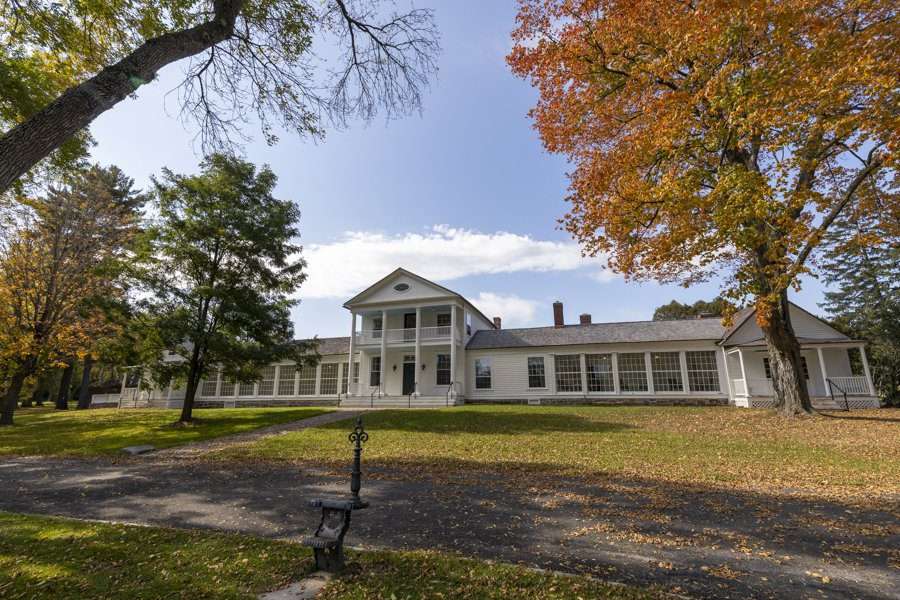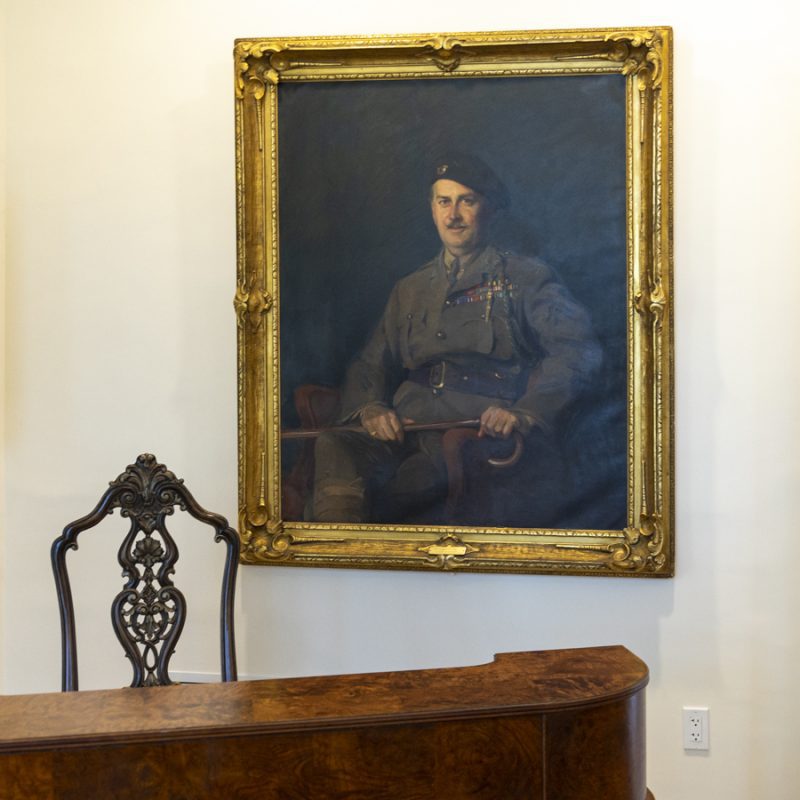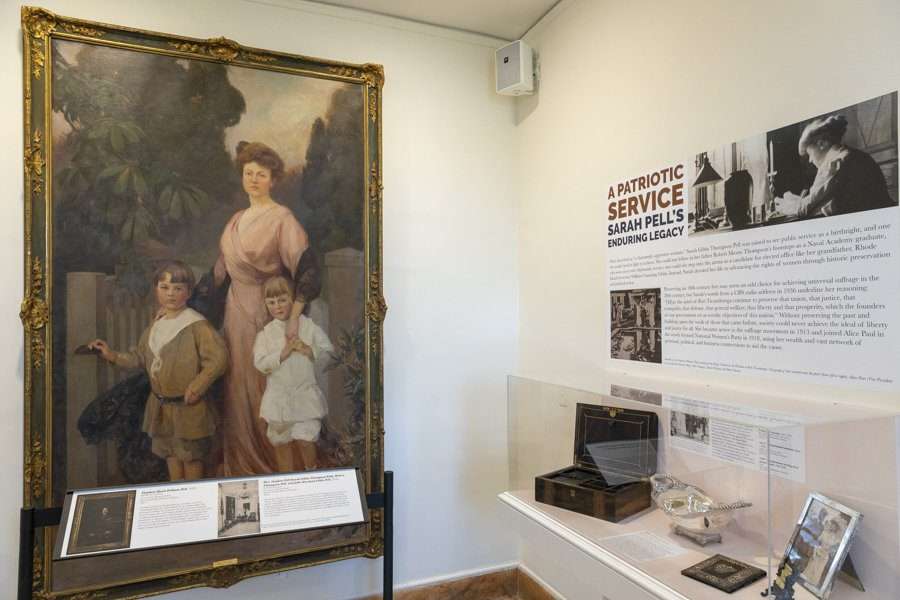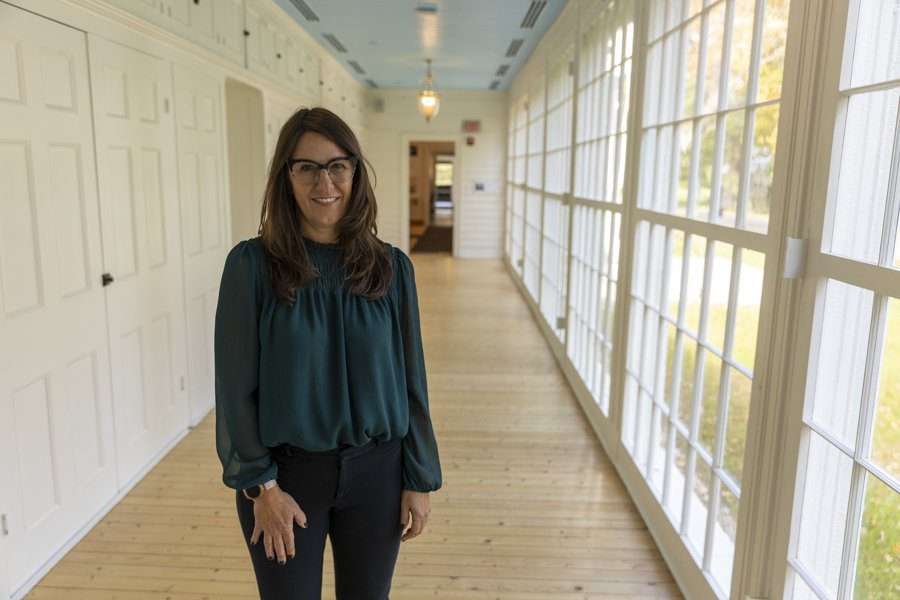
Ferris Pell and is considered to be one of America’s earliest summer homes. Photo by Mike Lynch
Fort Ti visitors will soon see results of years-long restoration project of former Pell residence
By Tim Rowland
Eighteenth century soldiers ordered to garrison in or around the cold stone walls of Fort Ticonderoga grumbled that it felt as if they’d been banished to the ends of the earth. They were not entirely wrong.
From the lower reaches of the Hudson River to Montreal, there wasn’t much in the way of civilization. That was still true 40 years after the fort had ceased to have any military significance, and its walls were beginning to crumble.
Then, out of nowhere, a flower began to bloom on the remote Lake Champlain shoreline. The fort and its surroundings were purchased by shipping magnate William Ferris Pell, who fenced off the old ruins to keep local home builders from carrying off its stones for their own foundations.
With that act, historic preservation in America was born.
Another first came when in 1826 William and his wife Mary built the Pavilion, a crisp palladian derivation of Greek temple architecture. It is believed to be America’s first summer residence, and in the 19th century must have had travelers scrambling to one side of the steamboat to gape at this fine artwork interrupting miles of territory that could charitably be described at the time as rustic.

The Pavilion through the latter half of the 19th century was converted into a hotel, and at the beginning of the 20th was reestablished as the private residence of Pell’s grandson Stephen Pell and his wife Sarah, who refurbished both the mansion and the fort and planted great gardens and orchards, some of the apple trees of which are still producing fruit.
By the beginning of the 21st century, though, the Pavilion had fallen into deep disrepair. It had remained a Pell family residence until 1987, but after that had been shuttered with little in the way of upkeep. Even so, it remained one of the most significant pieces of Adirondack architecture, and as Fort Ticonderoga stewards were intent on telling the site’s twin stories of war and peace, its restoration became imperative.

“It was in dire need of preservation, and it quickly became a top priority,” said Beth Hill, president and CEO of Fort Ticonderoga. “We didn’t realize quite how severe the situation was.” The staff began planning the $9 million restoration in 2014, with construction beginning in 2019.
Funding for the Pavilion restoration was made possible by major-donor support, New York State Council on the Arts, New York State Department of Environmental Conservation, New York State Office of Parks, Recreation and Historic Preservation, and The Arrow Family of Companies.
This fall, the public got its first glimpse of the painstaking rehabilitation efforts, as the Pavilion is once again an elegant beacon on the lake shore. It’s expected to be open full time to the public in the 2022 summer season. “This is such a milestone for us as an organization,” Hill said. “Ticonderoga was a place of conflict, but it was also a place of beauty, education and understanding.”
The role of the Pavilion is evolving, just as it has for the past two centuries, Hill said. In its latest incarnation, many of the rooms are employed to display exquisite museum pieces, including a chandelier owned by James Fennimore Cooper, and a couch owned by Napoleon.
Deciding what pieces of art and household artifacts to display wasn’t easy — the fort has 1,500 pieces associated with the Pavilion in its collection, Hill said.
Today’s Pavilion also has the latest in audio-visual tech that will be available for business meetings and retreats. Building on its hospitality past, the kitchen will teach culinary arts and prepare foods grown in the site’s gardens to be served in the cafe or to guests of events and weddings.
Those events will generate revenue that will help the fort move forward with its programs, curation and scholarship.
“With the completion of the Pavilion, we have the opportunity to bring new life and purpose to an American treasure. The Pavilion is a major component of our plans to transform Ticonderoga into a national cultural destination.”
— Beth Hill, president and CEO of Fort Ticonderoga

Stories of Adirondack history are usually rough and tumble affairs filled with leather-faced guides, lumberjacks and city tourists getting their first brush with bears.
The Pavilion was at the other end of the scale.
A trained horticulturist, William Pell studded the grounds with specimen trees and shrubs, a tradition continued by his grandchildren. The Pavilion became a noted garden spot, its floors trod by the likes of Howard Taft, Seneca Ray Stoddard and Robert Todd Lincoln. It was an intellectual center as well, Stephan Pell being a historian and Sarah a leader in the suffragist movement. The brick-walled formal garden that is the Pavilion’s backyard was designed by celebrated landscape architect Marian Cruger Coffin.
RELATED: More about Ticonderoga, a town in transition READ MORE
As renovation commenced, Hill said the Pavilion gave up its stories. The mansion was built in stages, as it turned out, with two symmetrical out-buildings later connected to the main hall with twin wings. More recent floor coverings were removed to reveal hand-painted floors.
Part of the wonder, too, is seeing how the Pells through the generations honored the past while building toward the future. It’s something the fort hopes to emulate. “They really connected history to the present and the future,” Hill said. “As we’ve worked on this project, I think their presence has been here with us in many ways.”
More to Explore
Subscribe to print/digital issues of Adirondack Explorer,
delivered 7 times a year to your mailbox and/or inbox
"explorer" - Google News
October 20, 2021 at 04:33PM
https://ift.tt/3Egezqy
The Pavilion in Ticonderoga: An American treasure - Adirondack Explorer
"explorer" - Google News
https://ift.tt/2zIjLrm
Bagikan Berita Ini














0 Response to "The Pavilion in Ticonderoga: An American treasure - Adirondack Explorer"
Post a Comment